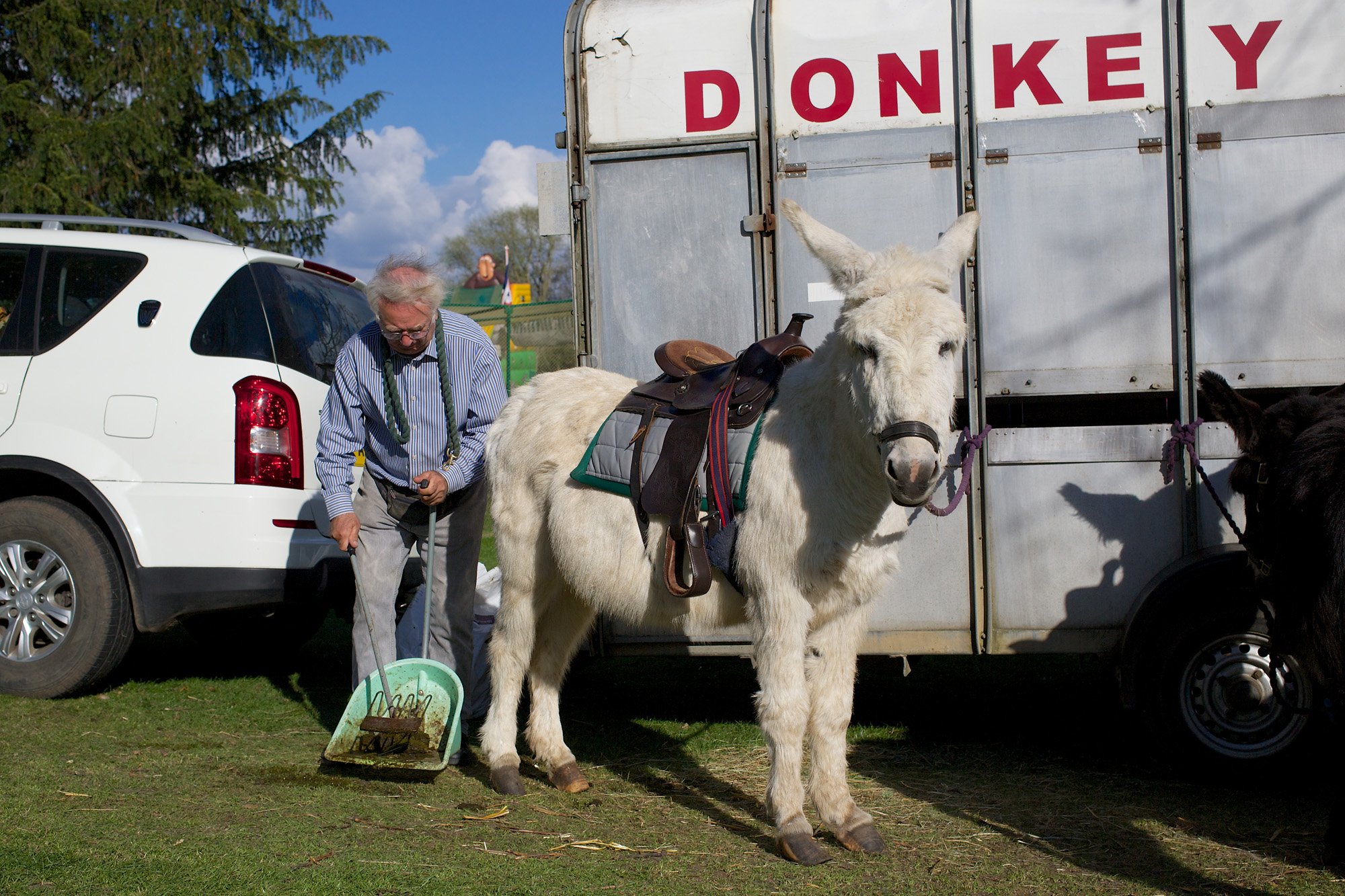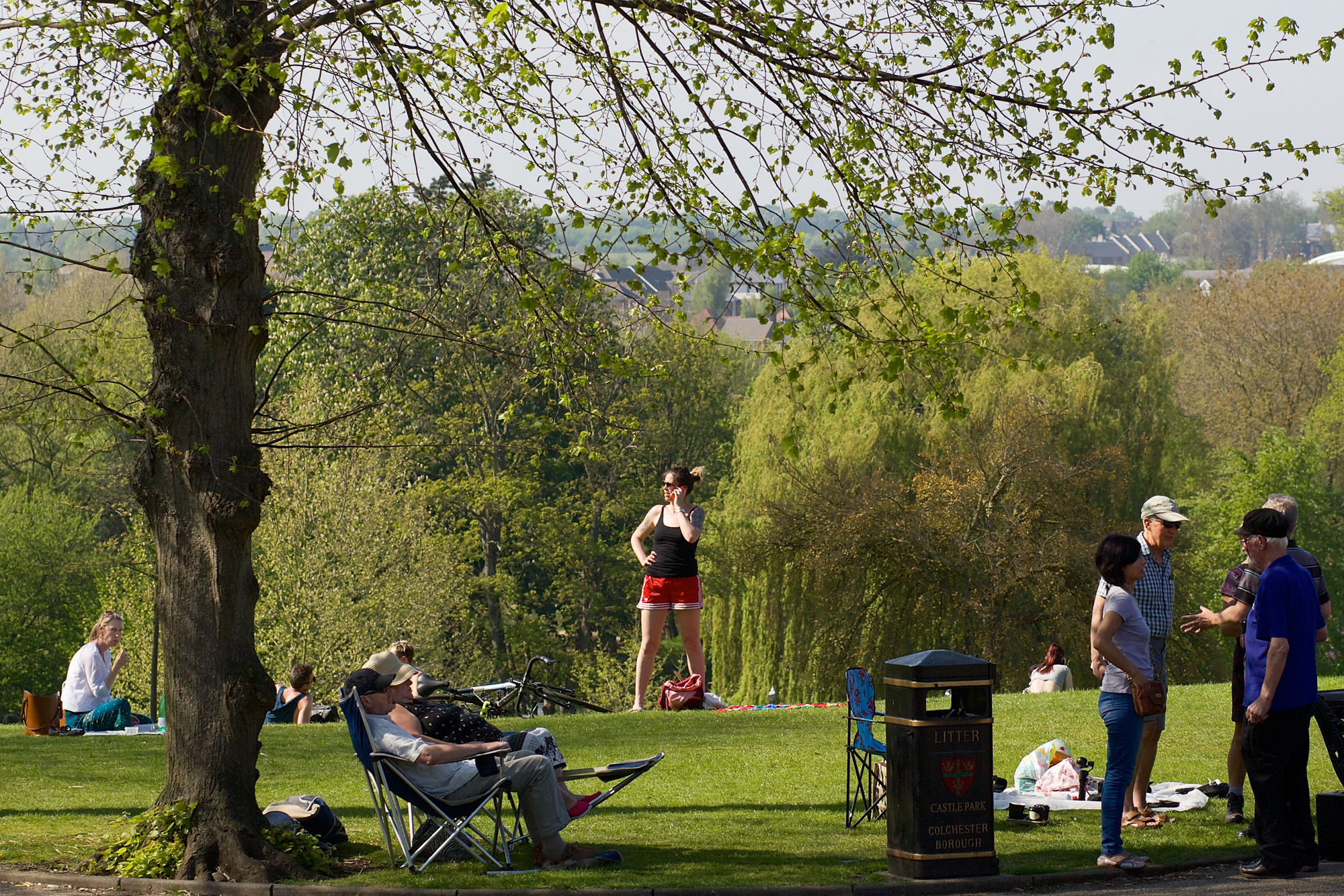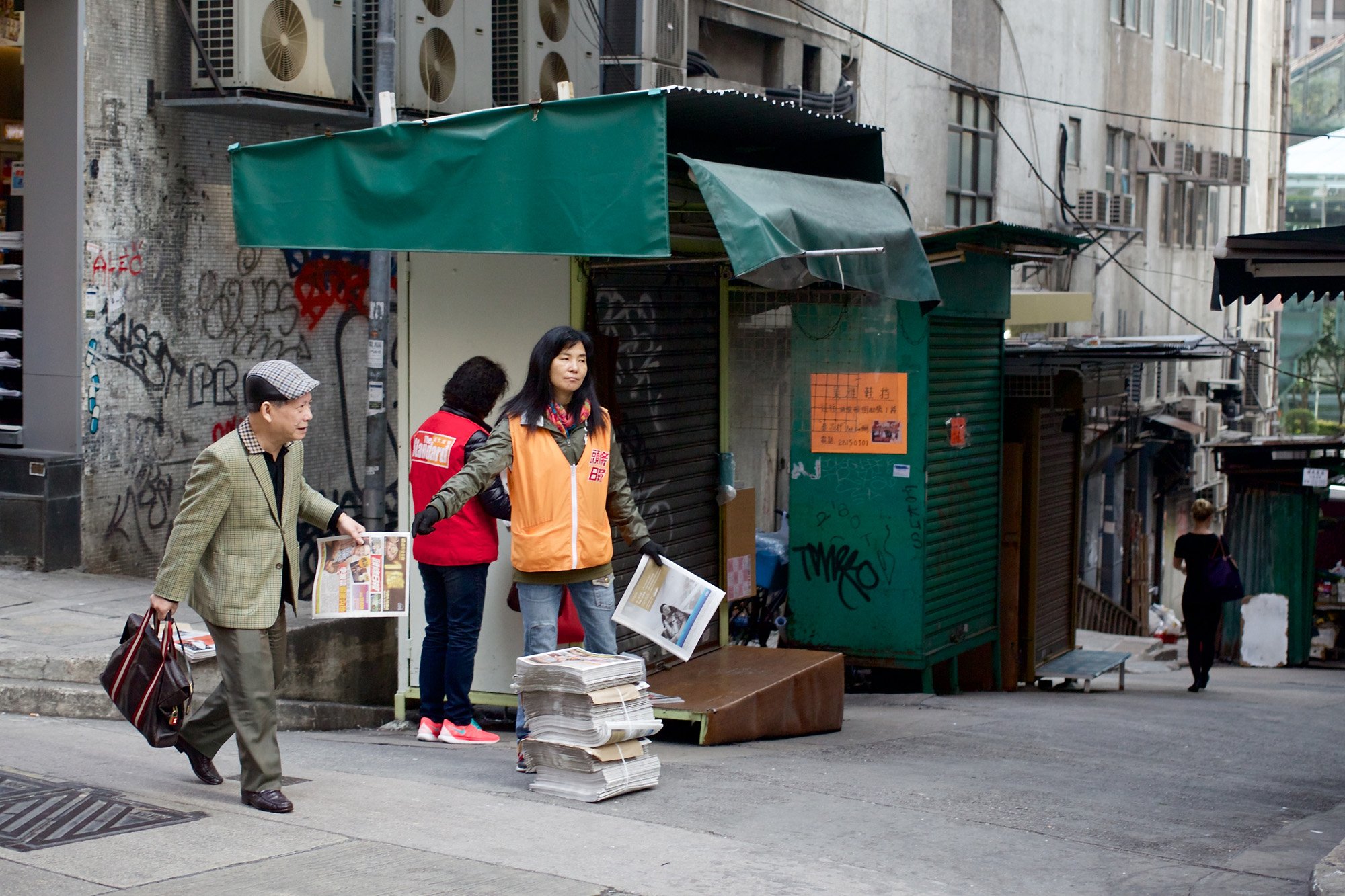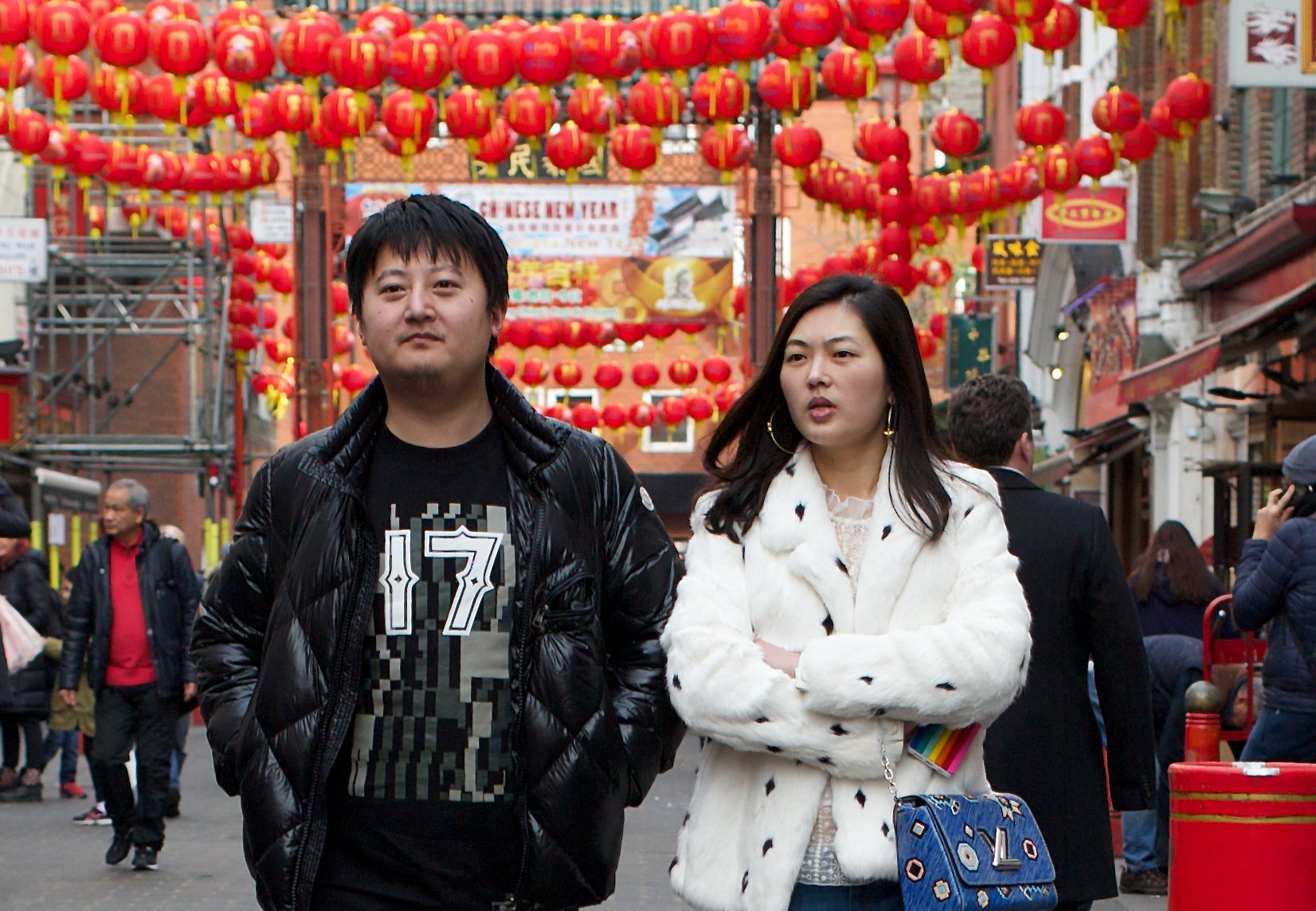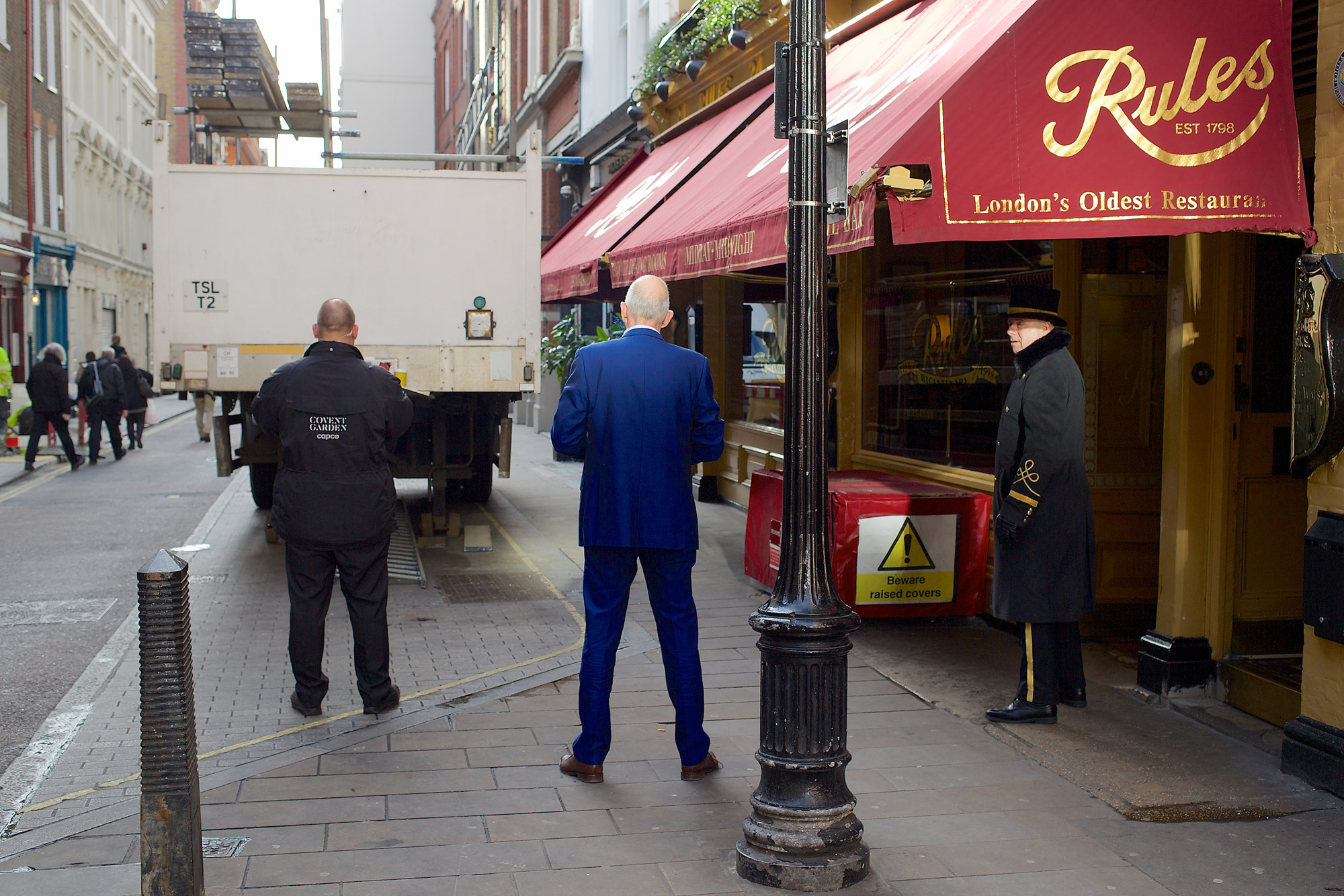Please don’t believe street photography gurus who tell you not to take photos of people from behind. You must be the judge. Will the subject make a good photo? Take it. Are you “copping out” because you don’t want to be noticed? Then leave it. It’s that simple.
I’ve always liked paintings and drawings of people’s backs. As a student I purchased some Michelangelo reproductions from Fratelli Alinari (the world’s oldest photographic firm) in Florence. They included “Study for the Libyan Sibyl” (1511), a preparatory drawing for one of the sibyls (female oracles) in the Sistine Chapel. The figure has her head turned to one side so that we can see her features, but it’s her stance — with her back to the viewer — which delights us the most.
Michelangelo knew the human form could look as good from behind as it does from the front. I think his attitude stemmed from being a sculptor who necessarily had to see figures in the round. By contrast, a painter can show only one aspect of a person — and there’s usually more to be gained from the front rather than the back.
The Obvious Choice
The photographer, too, chooses a single viewpoint and meets onlookers’ expectations by shooting the image from the front. If a portrait photographer were to place his sitters with their backs to the camera they’d be very surprised and I doubt if they’d pay the bill.
Even at the most rarified levels of photographic theory we can find a bias towards the frontal pose. For example, theorist Roland Barthes had a distinct preference for portraits which looked him “straight in the eye.” He hated to be ignored.
In “Why Photography Matters As Art As Never Before” critic Michael Fried tries to accommodate Barthes’ theory by referring to what he calls “facingness.” Describing it as “a major strain…in modernist painting since Manet,” Fried is clearly uncomfortable with the idea. After all, he is the champion of the artist’s fight against theatricality: a fight which painters win by depicting people absorbed in various tasks.
I’m with Fried on this. I love to show people who are totally absorbed in what they’re doing. Not only does it make for a great image, the people in it don’t notice they’re being photographed. This is the only true way in street photography.
I’m not suggesting that “facingness” is impossible to achieve without the subject breaking the barrier between scene and onlooker. However, I do think it’s unusual. In his determination to recruit Barthes as a supporter of anti-theatricality (and without naming it as such) Fried resorts to a kind of “sightless facingness,” as when a person gazes at you absentmindedly. The photographs of industrial buildings by Bernd and Hilla Becher fulfil this sightless mode as far as Fried is concerned.
Further Complication
There’s an additional complication for the street photographer because it’s hard to get close-up shots of people from the front without them seeing the camera. As a result, many would-be street photographers tend to “chicken out” and take pictures from the side or back. Clearly, you’ll never climb far up the ladder of artistic ambition if you’re chicken.
I have no idea whether Justin Roberts and Bryn Fenech are brave or timid, but I quite like their Instagram account “New York from Behind.” It’s a new take on the typical street fashion blog, made popular by The Sartorialist and StyleClicker.
Roberts and Fenech may not match the photographic quality of the others, but their images are revealing, quirky, and — when background plays a supporting role — street photography in a stricter sense.
Their figures do nothing significant. They just walk away from the camera as if it’s a movie camera. Of all possible subjects, these are the least likely to make eye-contact, the absence of which in movies Barthes so lamented: “in film, no one ever looks at me; it is forbidden — by the Fiction” (“Camera Lucida,” 1980).
At Last: The Pictures
In my own photography I’m not greatly interested in recording street fashions, but I sometimes see a potential shot when a person’s back is facing me. (I hope you like my idea of being “faced” by a back!)
I took the featured image (at the top) in a street market in Bangkok. If I’d taken a front view the photo would have been grossly inferior. The man’s face would have become the main subject. He would probably have grinned at me and I’d have yet another travel shot with “local colour.” As it is, the footstool-tray of confectionery is the main subject, with the added bonus of “Superstar c’est moi” on the tee-shirt, both in good light.
The second image (immediately above) is one of my favourites. I like the intense colours you can find in Bangkok’s Chinatown, entirely different from the equally appealing, softer shades of the other shot. The back viewpoint is right for this image, which shows a man struggling to tie a heavy load to a motorbike (in case you haven’t worked it out).
Parting Shot
I’ll conclude with a more complex composition, one which I hope viewers will come to like as much as I do. This, too, is from the dusty street markets of Bangkok.
A woman with an old and presumably fake YSL shoulder bag labours to shift crates of bottled water. More crates support the mini-mountain of fabrics in the background. There’s a subtle correspondence between the angle of the woman’s leg and the bare leg of the passer-by. A real bottle of water stands upright on the left, but it’s a different brand to the one advertised on the side of the cooler.
To see this image properly you have to overcome any aversion to shabbiness. It’s not a fashion shot! Roland Barthes would have hated it — as will many street photographers who see only in black and white. Neither of the subjects takes any notice of the onlooker; they’re absorbed in their own activity. The image is cinematic, but the composition has an accuracy that you won’t find in many frames of film.
Yes, I know. I had to squarify it. No one’s perfect.






